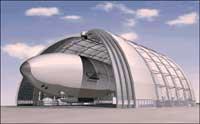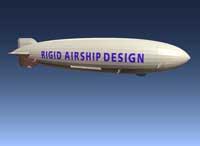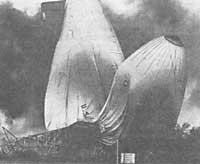Return of Zepelines
2000/07/02 Kortabarria Olabarria, Beñardo - Elhuyar Zientzia

The Hindenburg was the largest and most elegant guided ball of all time, larger than the Boeing 747 and almost the size of the Titanic. This Nazi symbol was capable of carrying 235 tons of weight. With 20 drivers and 50 passengers he could cross the Atlantic for about 60 hours. It seemed that the safe air transport of passengers had arrived with the Hindenburg, but the accident, along with the horror of the world, made the future of the guided balloons disappear.
Since the German giant burned down so far, the guided balls have been a thing of the past, but it seems that they can also be the future. "What would happen if every time people talk about planes people mentioned Flight 103 of Pan Am? And in the movies? I haven't seen a film that has a good directed ball yet." The above are the words of Scott Denneker, guided ball pilot of the company "Zeppelin Luftschifftechnick GmbH". Rather than talking about the accident, Denneker would prefer to talk about the Norge guided ball that set the exact position of the North Pole, or the millions of kilometers that the guided balls made before the accident.
Zeppelin Luftschifftechnick GmbH and Denneker pilots believe in the future of guided balloons. The company already has a new piloted ball named Zeppelin NT (New Technology). The flyer has a length of 75 meters. According to legislation, it can transport 19 passengers, but in Zeppelin NT there are only 12 seats. So it has nothing to do with the giant Hindenburg.

Other companies' expectations are higher. For example, the Dutch company Rigid Airship Desing is manufacturing a directed ball 180 meters long. This is nothing next to the 260 metre guided ball that Lifter wants to build in Berlin. The Hindenburg was 15 meters less. Although this was a luxury hotel, Lifter 160, who have named the ball guided, will use it to transport goods. The directed ball Lifter 160 has also been called "flying crane", since in its basement it can carry 160 tons of weight. The cargo area has a length of 50 meters and a width and height of eight meters. 36 standard containers could be included here. The carbon fiber guided balloon uses helium to fly. Helium is an inert gas that does not burn and is obtained from the air. The vessel's driving capacity is 10 people. To achieve the Lifter 160 propulsion it uses diesel engines and low consumption propellers. All this allows you to reach a speed of 125 kilometers per hour. The giant can rise to a maximum height of 2,000 meters and has a flight range of 10,000 kilometers. Obviously, there is no equivalent transport in the world.
Lifter's project has generated great curiosity in Germany. Last October, the first flight of the Lifter 160 guided balloon prototype, named Joey, took place. The prototype is 8 times smaller than the original. The final model will begin in October of this year and is expected to be completed by 2002. Christian Erles is Lifter's Marketing Manager, who ensures that guided balls will be the most important means of transport in the future. "It will be the best option to transport large turbines or large prefabricated parts quickly and economically. Look, a cubic meter of helium can reach a kilo of weight and does not exhaust, on the contrary, any plane for every kilo that receives burns at least one liter of kerosene. Looking ahead we consider that every year it may be necessary to transport about 3 million tons and for this we should drive 200 balls like this". Data, Liftter will drive 50 balls over the next 15 years.
In the field of the guided balls there is also a more daring project, that of the guided balls HALE (High-Altitude Long-Endurance). Such gadgets, theoretically, will be prepared to reach the stratosphere, and could send radio signals or measure the ozone layer. There are many groups working on these types of projects: The Italian Space Agency is manufacturing a $3 million guided balloon to carry satellite episodes of up to 100 kilos. American Sky Station is designing solar-powered guided balloons. The aim of this project is to create a global telecommunications network. The project, however, is still in intent. The European Space Agency also has its HALE project, although it is still in the launch phase.
From the Hindenburg disaster to the present day, guided balloons have been presented in most cases with a dark past, presenting themselves as something of the past. Now it seems they can have a future, a happier future.
Published in 7

Gai honi buruzko eduki gehiago
Elhuyarrek garatutako teknologia






